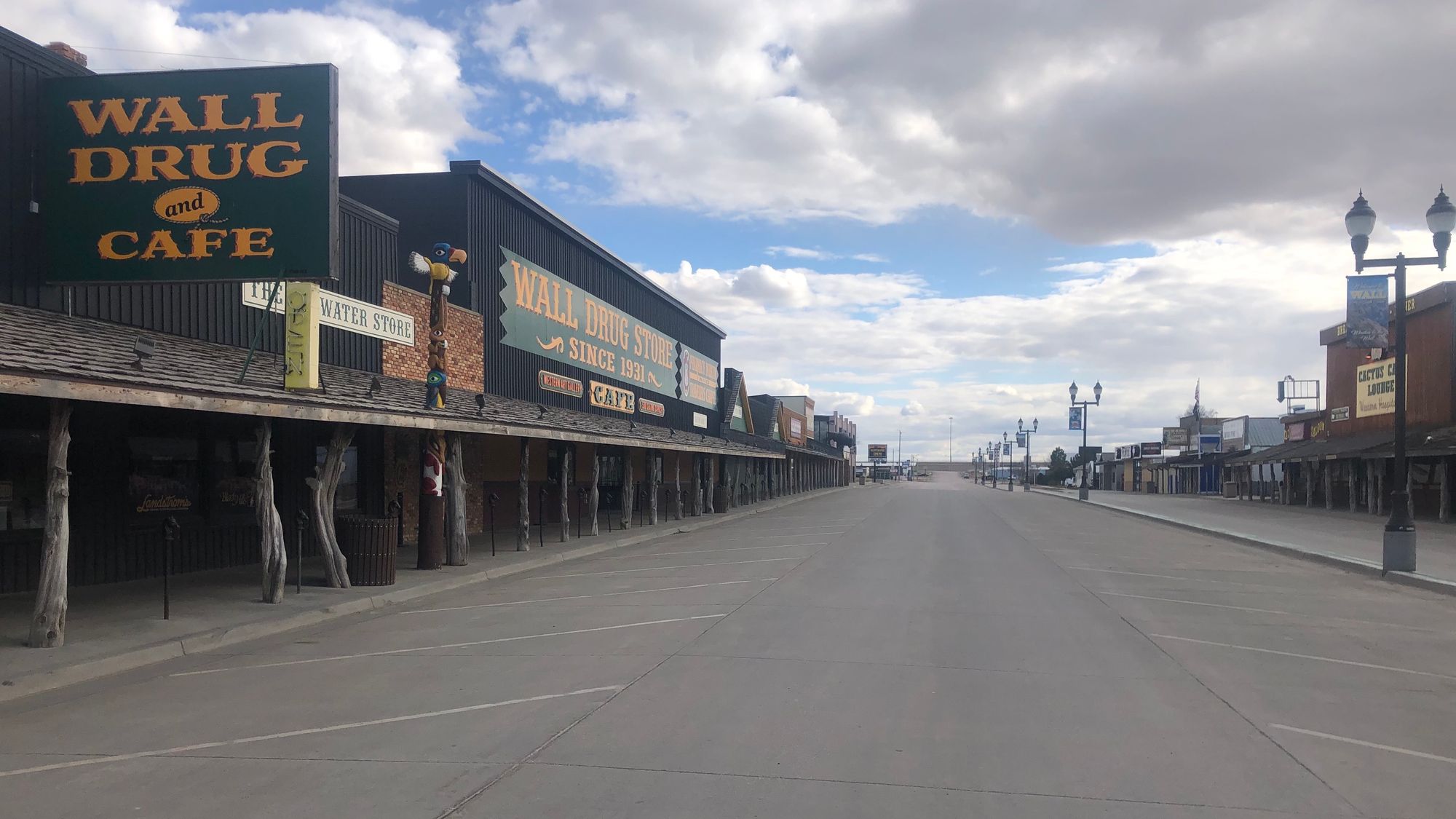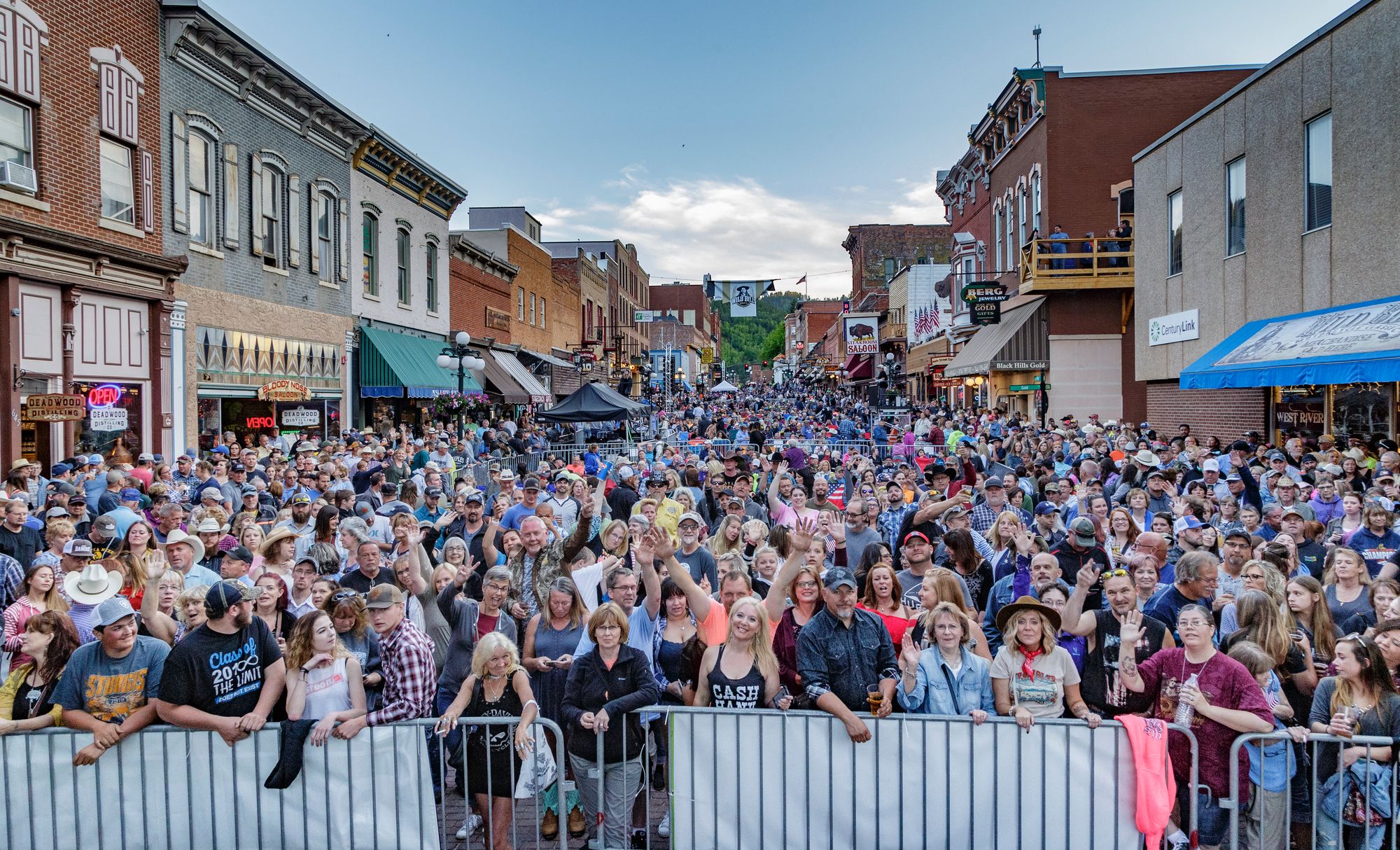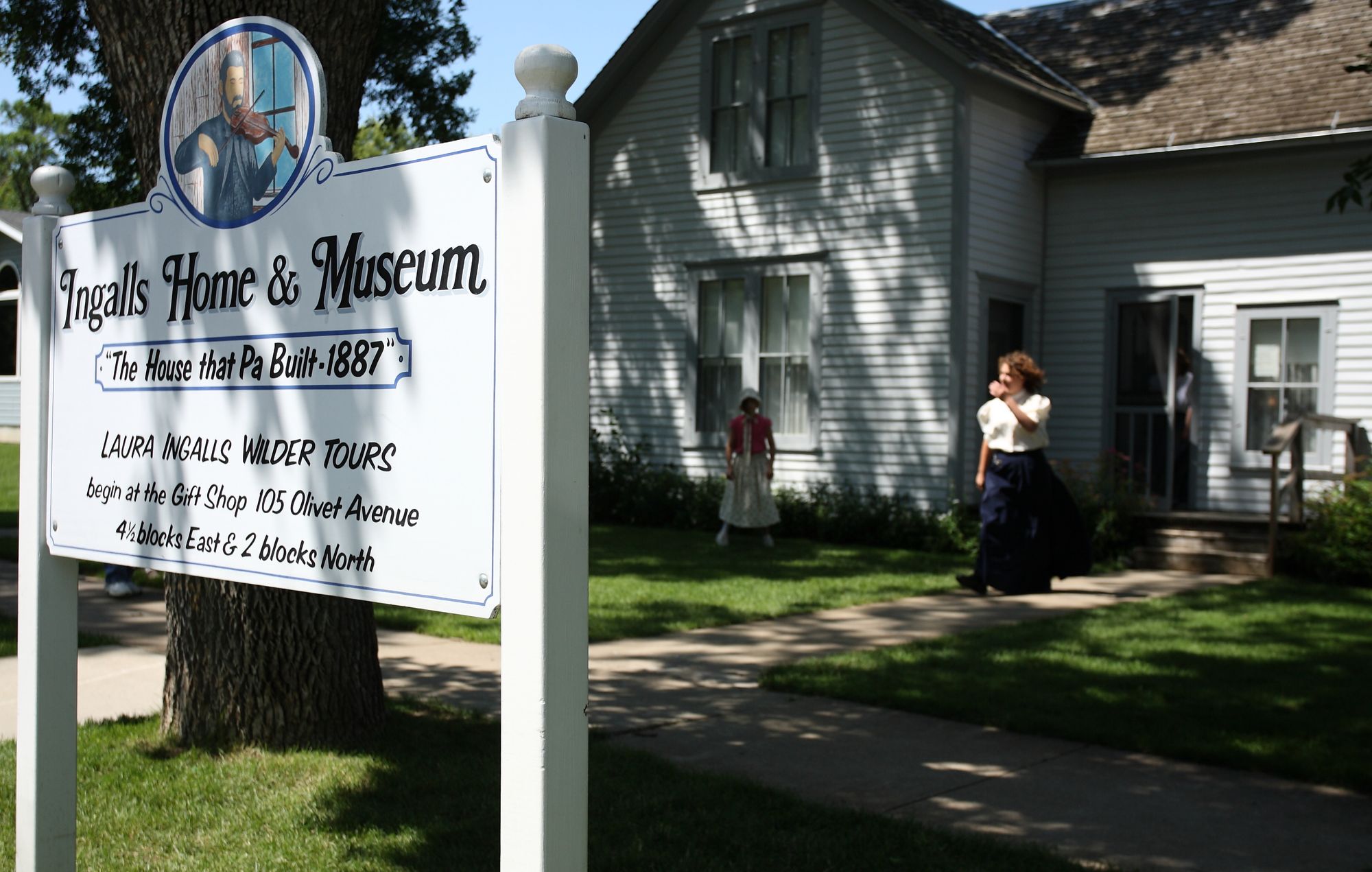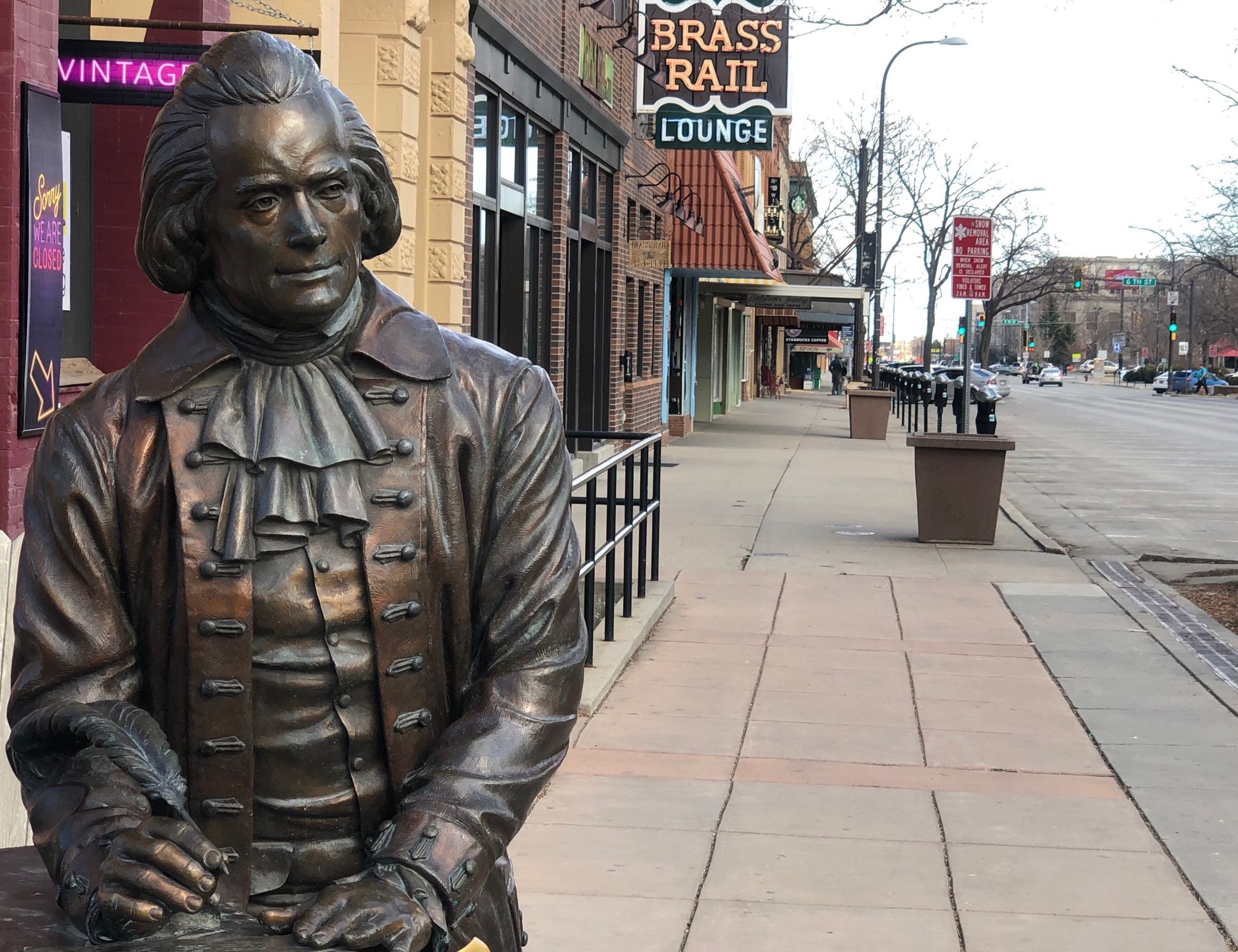The COVID-19 pandemic has almost completely shut down tourism in South Dakota, one of the state’s largest industries.
The loss of visitors now and potentially into the summer tourism season threatens to cut off a vital economic lifeline for businesses and their employees and eliminate a major source of sales tax revenues that fund operations of cities and state government.
Gov. Kristi Noem has said the pandemic and efforts to slow the spread of the COVID-19 virus, such as social distancing and foreign travel restrictions, would likely continue through May, when infections are expected to peak in South Dakota. The unwelcome news could presage devastating economic consequences across the state.
Tourism represents roughly 5.5% of the state’s gross domestic product, a key indicator of economic health. According to a report prepared for the state Department of Tourism, tourists in South Dakota in 2019 spent more than $14.5 billion and generated more than $308 million in state and local tax revenue, mostly through sales taxes. In terms of employment, the industry supported more than 48,000 full-time jobs in South Dakota and at least partially supported another roughly 7,000 jobs last year.
“One-third of our sales tax revenue in South Dakota is paid for by people outside their own zip code,” said state Sen. Jeff Partridge, R-Rapid City, a member of the Senate Appropriations Committee. “Now, that could be me traveling to Custer, it could be traveling to a hockey tournament in Brookings, but it’s also those folks traveling from all over the country to come here.”
As early as March 19, tourism-focused businesses in the Black Hills were reporting drops in sales and spring bookings of more than 40%, according to the South Dakota Retailers’ Association.
Major tourist attractions across the state were shut down in March, including the Corn Palace in Mitchell, Wall Drug in Wall, the casinos in Deadwood, the Crazy Horse Memorial near Custer and many others. The one-way streets in downtown Rapid City, with their presidential statutes and numerous shops and eateries, were devoid of tourists on a recent sunny day in mid-March. The city of Wall seemed ominously quiet on a 65-degree Sunday in late March with not a single car parked on the typically busy divided throughway in front of Wall Drug.

U.S. Sen. Mike Rounds, R-South Dakota, offered News Watch a bleak assessment of the once-promising 2020 tourism season during a March 23 interview. The former governor said he is aware of the fiscal challenges a major drop-off in tourism in South Dakota will create for state and local governments, but also for the entire state economy.
“We have to recognize that this tourism season is going to be extremely difficult, if almost nearly non-existent,” Rounds said.
Many in the tourism industry were looking for a banner year in 2020 after wet and cold weather slowed tourism some in 2019. With an overall strong national economy, and the 80th Sturgis rally and possible fireworks at Mount Rushmore on tap, South Dakota looked to be an attractive destination for travelers in 2020.
But in March, as the virus took hold, seasonal businesses began to scale back hiring and year-round operations had to make difficult choices on whether to reduce staffing or even close temporarily.
“If there’s anybody out there that’s not being affected in the hospitality business, they‘re very lucky,” said Stacie Hull, general manager of The Rushmore Hotel & Suites in Rapid City.
Hull said hotel employees were seeing their hours cut back or shifts eliminated. ”There’s very few arrivals and bookings right now,” she said. “Everyone is on hold and waiting to see how long it’s going to be around.”
Some in the tourism industry are worried that the virus might have a long-range negative impact on the state’s tourism economy and the livelihoods of those who work in the industry.
“That’s another concern in this; if we get things up and running again, is our visitation going to bounce back immediately, because it may take a little time for people to get back into the travel groove,” said Lee Harstad, director of the Deadwood Chamber of Commerce. “It’s a scary situation all over, and people aren’t sure how we’re going to get through this.”

Loss of tourists means loss of taxes
Many South Dakota communities rely on robust sales taxes to fund their governments, Partridge said. Most cities collect a 2% sales tax on sales made within their city limits. An additional 1% tax can be levied on hotel beds, alcohol sales and restaurant sales. Those so-called “Triple B” taxes — for bed, booze and board — are used to help promote cities to tourists or conventions and can play a key role in attracting more business into a city or region.
Partridge said he hoped that a treatment or vaccine for COVID-19 could be found before the summer tourism season kicks off in earnest around Memorial Day, but that prospect seems unlikely. And even if a treatment is found, there will be fewer people visiting the state this year.
“Art festivals, and everything around the state from the Czech fest (Czech Days in Tabor) to the Corn Palace Festival, to the Sturgis rally are all up in the air right now and in great question,” Partridge said.
In De Smet, home to popular attractions focusing on iconic American author Laura Ingalls Wilder, visitor-focused businesses were grinding to a halt, said Rita Anderson, director of the De Smet Development Corporation.

The loss of tourists and the tax revenues they bring in could have a significant negative impact on the city. Sales taxes collected by De Smet retailers in 2019 accounted for roughly $591,000 in revenue, according to the state Department of Revenue. The city’s 2020 general fund budget was $1.37 million, according to budget documents on the city of De Smet’s website.
One of the city’s biggest tourist attractions, the Laura Ingalls Wilder Memorial Society, which is one of eight Laura Ingalls Wilder Museums in the country, closed its operations to the public on March 21. The move was an effort to comply with social-distancing recommendations due to COVID-19. Visitors had been coming from around the country until the closure, said Executive Director Tessa Flak. She and her two staff members planned to keep working on several projects through March 31. But if the society remains closed to the public after that date, they’ll run out of work to do.
“If we don’t have new projects, we’re going to have to cut that out. too,” Flak said.
A closure of six to eight weeks would cut the memorial society’s tourist season almost in half, Flak said. It could mean a drop in business at local restaurants and shops, too. Visitors who come to De Smet for the Laura Ingalls Wilder Memorial Society Museum, the Ingalls Homestead and the Laura Ingalls Wilder Pageant are encouraged to spend time and money in other local businesses before they leave, Flak said.
In De Smet and elsewhere, many stores have seen their revenues crater in recent weeks, Nathan Sanderson, South Dakota Retailers’ Association executive director, told South Dakota News Watch in a March 20 interview. With the exception of grocers — who have seen sharp spikes in demand as South Dakotans stock up on essentials and eat at restaurants less — retailers were seeing sharp declines in sales. Bars and restaurants were the state’s hardest hit businesses, Sanderson said.
South Dakota’s hotels, restaurants and bars rely on visitor spending to stay afloat. Hotels get as much as 77% of their business from tourists, according to the Department of Tourism. About 42% of restaurant revenue in South Dakota is due to tourism. Businesses that cater to recreational activities such as fishing, biking or even rock climbing get about 57% of their revenue from visitors.
Sanderson said many of the state’s bars, restaurants and hotels might last for a few more weeks under the current social-distancing guidelines, but not much more.
“If you look at all of the messaging that’s going on right now, everybody’s saying, ‘Don’t go, don’t do anything. Don’t go to the bar, don’t go to the restaurant, even if there are fewer than 10 people there, don’t congregate,’” he said. “Those are exactly the kinds of messages that … don’t keep the economy turning.”
The closure of the casinos in Deadwood by the city council on March 25 could have significant implications for the town, the Northern Black Hills and the statewide promotion of tourism in the future, said Harstad, the chamber director.
The closure of casinos put an estimated 1,200 people out of work and will result in millions in lost payroll and payroll taxes. Harstad said that, based on data from April 2019, the closure for the entirety of April 2020 alone could result in the loss of $740,000 in tax revenues for the month, about $265,000 of which went to the state Department of Tourism and about $83,000 of which went to the state’s general fund. April is typically a slow month for Deadwood tourism, he added.
Tourism-driven businesses in Deadwood and across the state are reeling from the economic and emotional toll of the pandemic and the unknowns it has caused, Harstad said.
“It’s a terribly difficult situation, and right now, everybody just wants to know what’s next, what can we do, and right now we just don’t have the answers,” Harstad said. “It’s sad; it’s heartbreaking and the worst part is that there’s nothing we can really do about it.”

Some reasons for optimism
One thing that might help keep the South Dakota economy functioning is the Small Business Administration loan program that will provide low-interest loans to businesses to cover payroll and expenses for a few months, said Partridge, who is a financial adviser.
New measures included in the federal stimulus package passed March 27 also will help businesses keep employees and bills paid, Sanderson said. One key measure would allow businesses to delay submitting payroll taxes for 2020, which will help businesses use what cash they have on-hand to pay employees or rent.
In an effort to address an unprecedented spike in unemployment due to COVID-19, the stimulus package also will boost unemployment benefits and loosen some of the program’s requirements. Employers who have never had to help employees navigate the unemployment insurance program before will find the process easier, Sanderson said.
Another provision in the virus bailout law would help small businesses by providing loans with principal amounts for mortgages and payroll expenses that can be forgiven if employers keep paying their workers, Rounds said.
“That will really give them a chance to keep their people employed, pay their bills and get through the first half of this tourist season,” he said.
Despite all the doom and gloom, Sanderson said he remains optimistic that most of South Dakota’s businesses will survive the pandemic and be able to take advantage of a spike in demand once the threat from COVID-19 eases.
“Are some businesses going to close because of this? Yes, but most of our businesses will make it through,” Sanderson said. “I really think we’re pretty optimistic people in America. I think more Americans will be ready to get out, away from their homes for a while and travel, once we get the all clear.”
Potential tourists are also showing some optimism that 2020 will still be a good year to visit South Dakota at some point, according to Janet Wetovick-Bily, executive director of the Hill City Chamber of Commerce.
“We’re in a wait-and-hold mode, but we remain hopeful and encouraged,” she said. “Our guests are sending us messages, very encouraging messages and saying, ‘We’re still looking forward to our trip, and we’ll see you later in the summer or later in the fall.’”



